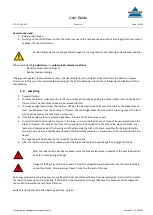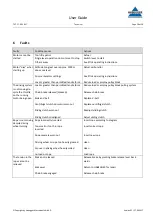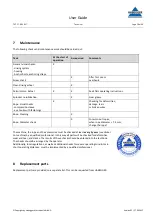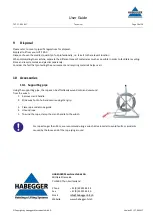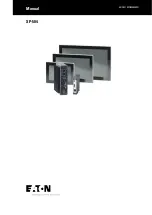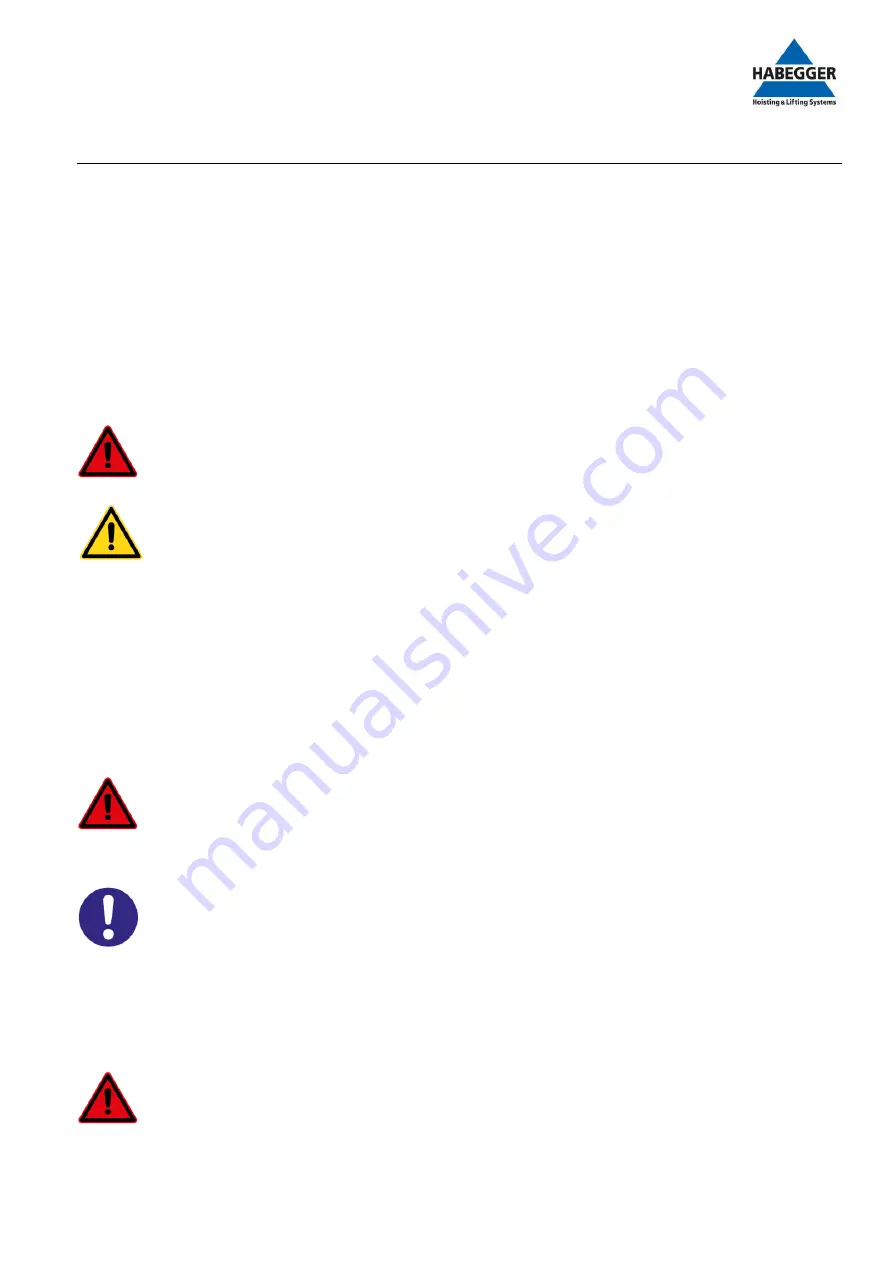
User Guide
TGT. 27.09.2017
Technical
Page 11 of 20
©Copyright by Habegger Maschinenfabrik AG
Version 02 / 27.09.2017
Load
The load is attached to the traction hook using the appropriate means of fastening. This prevents the load from slipping or
tipping during operation.
Appropriate means of fastening are, e.g., eyelets, loops, straps, harnesses.
The load’s inherent stability must be guaranteed in order to prevent any slipping or tipping during operation.
Be aware of obstacles which would cause the load to tip or jam.
Refrain from using unchecked loads (e.g. buckets, containers) during the operating stroke or in intermediate positions or
monitor them with a load-weighing device.
Please take possible stress peaks (in static states) from external influences into consideration during periods of resting during
operation and anchoring work.
Excessive blows to and stresses on the rope pulling machine (e.g. anchoring to machines which have been moved, wind, etc.)
should be prevented by use of a strain release wire.
-
Danger! Do not store load, pulleys and ropes in the danger zone!
-
Secure freely suspended loads against twisting!
Pulling, hoisting and lowering
The careful installation of the rope drive and the machine assembly is the best guarantee of smooth operation.
Place the rope on the rocker as shown on the information sheet (see chapter 5.2, observing the location of the rope with the
load hook)
Check the length of rope and the machine’s hoisting abilities by pulling!
Keep an eye on the load when it is moving!
When pulling diagonally upwards, the rope pulling machine can tip over. Shim with wood or avoid diagonal pull using a pul-
ley.
If anything is unclear, request supervision from an assistant, via radio communication if required.
-
Close and secure the housing cover over the driving system using screws before operation. This way the
rope is protected against derailment and no foreign objects can enter.
The free end of the rope must also be able to exit the rope pulling machine unhindered.
-
Never allow the hook to touch the housing.
When lowering, ensure that the rope is long enough. Stop at least 2 m before the end of the cable and shim or rehang the
load.
Petrol motor
See the safety instructions in the attached STIHL user guide.
-
Danger! Wear ear defenders when working with the petrol motor!

















